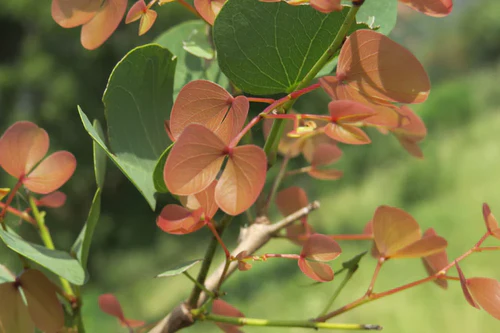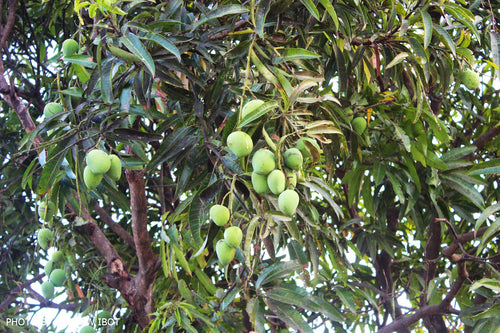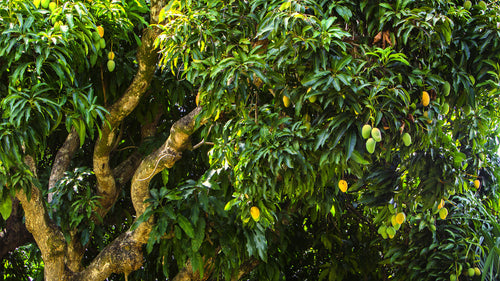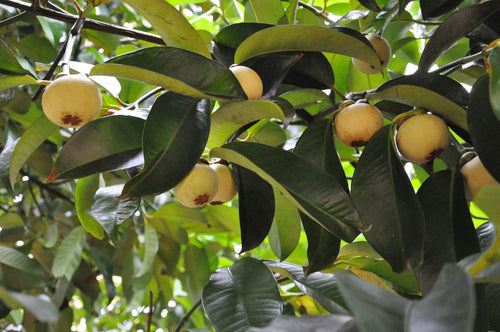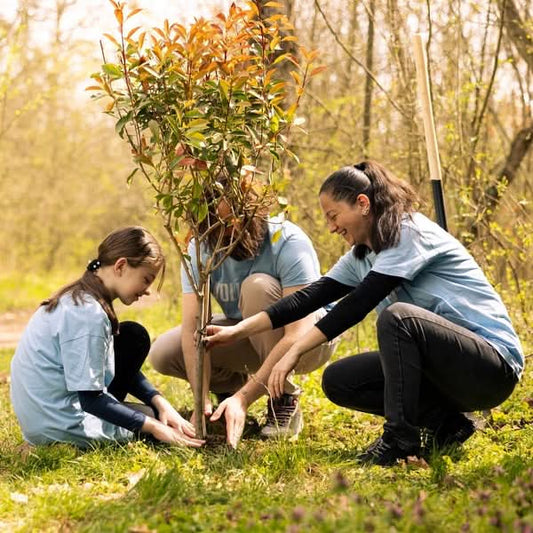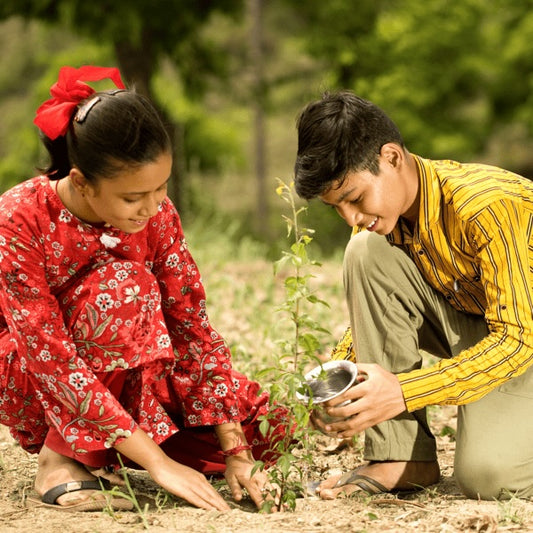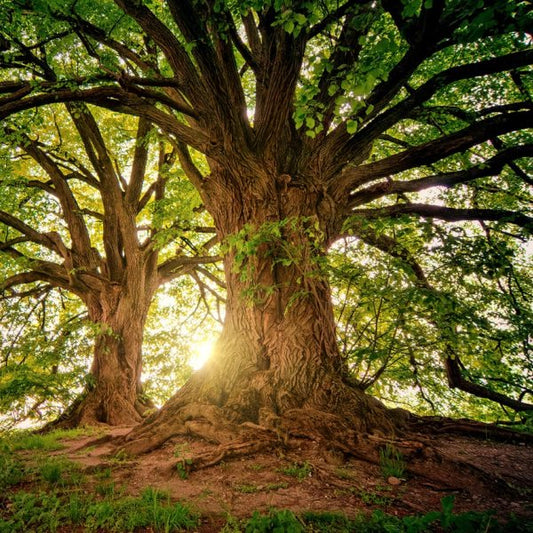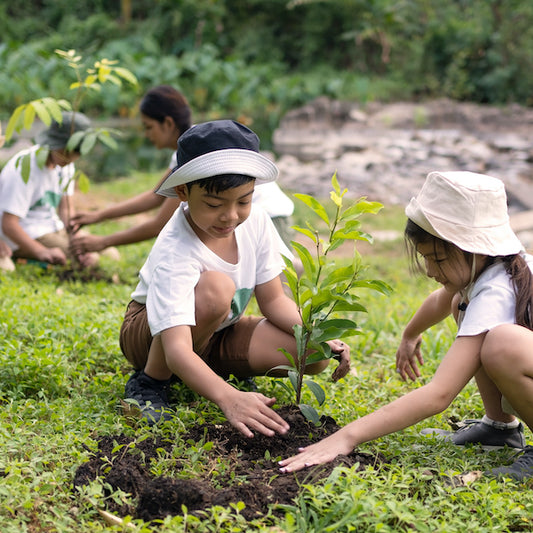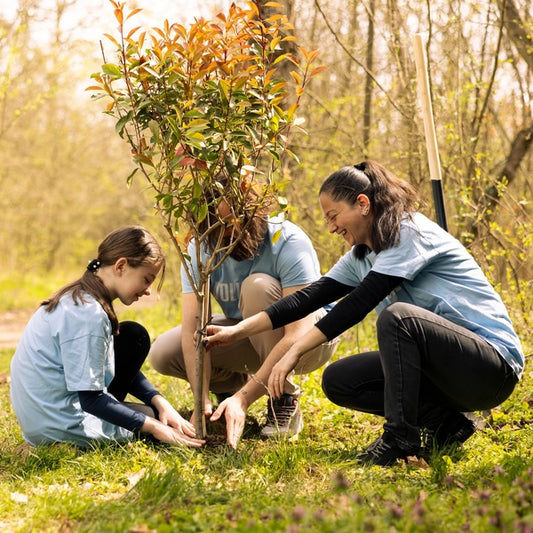V Group’s Green Legacy: Sustainable Tree Planting for CSR in Siwai
V Group’s tree plantation initiative, under its Corporate Social Responsibility (CSR) program, focuses on promoting sustainable agroforestry practices Read more
Plantation Site Gallery
Project Update 1







Digital Forest
Forest with 100 Trees planned
Want to plant your tree now?
Plant a Tree @ 299V Group’s Green Legacy: Sustainable Tree Planting for CSR in Siwai
V Group’s tree plantation initiative, under its Corporate Social Responsibility (CSR) program, focuses on promoting sustainable agroforestry practices. By planting a diverse range of trees in collaboration with local communities and farmers, the initiative aims to enhance biodiversity, restore degraded lands, and support livelihoods. This program not only contributes to environmental conservation but also strengthens the economic resilience of rural communities by integrating tree planting with agricultural activities, fostering a balanced ecosystem for long-term sustainability.
Project Planning & Execution
No of Trees: 220
Plantation Location: Village Siwai, Tehsil Rajpur, Barwani, Madhya Pradesh, 451447
Plantation Date: 21st September 2024
Name of Species: Teak, Chirol, Bamboo, Karanj, Wild Badam, Belpatra
Species Selection & Its Benefits:
The initiative prioritises the planting of native tree species, ensuring high survival rates and fostering long-term ecological stability. By aligning tree selection with local market demand, the project enhances environmental sustainability and provides farmers with viable income opportunities. Farmer consent and participation play a crucial role in species selection, ensuring that the chosen trees integrate seamlessly with existing agricultural practices.
The selected species, Teak, Chirol, Bamboo, Karanj, Wild Badam, and Belpatra, offer a diverse spectrum of ecological, environmental, and socio-economic advantages. Teak, a valuable hardwood species, plays a vital role in long-term carbon sequestration and provides economic returns through sustainable timber harvesting. Chirol (Holoptelea integrifolia) is a fast-growing native tree known for its medicinal properties and ability to thrive in degraded soils, aiding in land restoration.
Bamboo, a versatile and fast-renewing resource, enhances soil stability, supports rural livelihoods, and serves as a sustainable alternative to wood. Karanj (Pongamia pinnata) is a nitrogen-fixing tree with oil-rich seeds used for biofuel and traditional medicine, contributing to soil health and clean energy solutions.
Wild Badam (Sterculia foetida) supports biodiversity and produces seeds with commercial and nutritional potential. Belpatra (Aegle marmelos), sacred in Indian culture, offers medicinal benefits and attracts pollinators, enriching the local ecosystem while supporting cultural and ecological harmony.
Overall, these species align well with agroforestry goals, fostering both ecological resilience and community well-being.
Beneficiaries Details
| SN | Farmer Name | Google Location | Village Name | Plot Size | Teak Planted | Chirol Planted | Wild Badam Planted | Karanj Planted | Bamboo Planted | Belpatra Planted |
| 1 | Mr. Trilok Barfa | https://shorturl.at/0OG5p | Siwai | 0.099 Acre | 118 | 15 | 3 | 12 | 70 | 2 |
Planting Methodology and Its Advantages
Agroforestry: V Group’s tree plantation initiative is based on the agroforestry concept, a sustainable land management practice that promotes environmental conservation while supporting local sustainability efforts. This initiative contributes to long-term ecological balance while enhancing carbon sequestration and biodiversity. Agroforestry helps improve soil health, enhance water retention, and reduce soil erosion, ensuring sustainable land use. Additionally, it reduces dependence on chemical fertilisers, fosters natural pest control, and creates microclimatic benefits, such as temperature regulation, wind protection, and shade for companion crops.
V Group recognises agroforestry as a strategic approach to environmental sustainability, ecological restoration, and carbon footprint reduction. This initiative reinforces the company’s commitment to responsible environmental practices, contributing to a greener planet and a more sustainable future.
Advantages of Agroforestry
-
Increased Farmer Incomes: This approach helps in increasing the farmer’s income by as much as 3 times. Farmers benefit from diversified income sources, lifting economic resilience.
-
Improved Livelihoods: Agroforestry enhances farmers' resilience to economic and climate-related shocks by creating more sustainable and diversified farming systems.
-
Biodiversity Promotion: Agroforestry supports a diverse range of plants and animals, creating habitats for wildlife and improving ecosystem health.
-
Environmental Sustainability: This model reduces carbon emissions and promotes sustainable land management, aligning with SDG 13 (Climate Action) and SDG 15 (Life on Land).
-
Food Security: Agroforestry enhances agricultural productivity and food availability by integrating fruit-bearing trees with crops, contributing to SDG 2 (Zero Hunger).
-
Carbon Sequestration: Trees planted through agroforestry absorb carbon dioxide, helping reduce greenhouse gas emissions.
-
Climate Resilience: Agroforestry helps mitigate climate change impacts by improving land productivity and fostering biodiversity.
- Improved Soil and Water Management: Trees enhance soil fertility, reduce erosion, and increase water retention, resulting in more resilient farming.
Activities During Tree Plantation
V Group organized its Plan(t) for Future initiative with a tree plantation drive at Village Siwai, Tehsil Rajpur, District Barwani, Madhya Pradesh 451447. The site was selected for its agroforestry potential and farming-centric landscape. Native, multi-purpose species were planted to boost soil health, enhance biodiversity, and support sustainable livelihoods. This initiative reflects V Group’s commitment to environmental restoration and rural empowerment.
On 21st September 2024, an event was organised where V Group personnel actively participated alongside local farmers in planting 220 saplings. The ground team led the on-ground efforts, with all pits prepared in advance to ensure smooth execution. V Group employees planted and watered the saplings with care and enthusiasm, reinforcing the company’s commitment to environmental stewardship and community development.
The atmosphere was filled with excitement, teamwork, and a shared sense of purpose. This hands-on initiative not only strengthened employee engagement and community bonding but also reaffirmed V Group’s dedication to environmental stewardship and collective action for a sustainable future.
Conclusion Elements
Impact
Direct Impact
| Parameters | Values | References |
| No. of Trees Planted | 220 | |
| Green Cover (Acres) | 0.099 | |
| Fruit Production Potential (Tons/Year) | ||
| Non Timber Forest Product (Tons/ Year) | ||
| Timber Production Potential ( Tons ) | ||
| Bamboo Production Potential (Tons) | ||
| Income Generation Potential (Rs/Year) | ||
| Carbon Sequestration Potential (KG) | 20 |
Small to medium-sized trees can sequester around 10–48 kilograms (22–106 pounds) of CO₂ annually. https://growbilliontrees.com/blogs/knowledge/how-much-co2-can-one-tree-absorb |
| Carbon Sequestration by 220 mature trees ( Tons/year) | 4.4 Tons | No. of Trees x Carbon Sequestration by 1 mature trees per year |
| Carbon Credit Equivalent | 4.4 | One carbon credit is equivalent to one tonne of carbon dioxide or the equivalent amount of another greenhouse gas. |
| Carbon Footprint of an avg Indian Citizen (Tons/Year) | 1.8 | https://www.iea.org/countries/india/emissions |
| Offsets Annual Carbon Footprint of (Adults) | 2 | Carbon offset by 220 mature trees per year / Carbon Footprint of an avg Indian Citizen per year |
*This impact analysis is forward-looking (An Agro-forestry project matures in 3-5 years)
Indirect Impact
Community Impact
-
Empowerment of Farmers: By providing training and resources for sustainable farming practices, agroforestry equips farmers with skills to enhance productivity and adapt to environmental changes.
-
Improved Soil and Water Conservation: The plantation of native tree species enhances soil structure, reduces erosion, and improves groundwater recharge, leading to better long-term agricultural productivity and environmental sustainability.
-
Environmental Awareness: Community involvement in tree plantation fosters a sense of responsibility for environmental conservation and promotes sustainable practices in daily life.
-
Enhanced Social Equity: Agroforestry initiatives foster enhanced social equity by empowering marginalised farmers with sustainable livelihoods, bridging economic gaps, and promoting inclusive community participation in environmental conservation efforts.
-
Resilience to Climate Change: The diverse and sustainable nature of agroforestry helps communities mitigate the impacts of climate change, including extreme weather events, by stabilizing local ecosystems.
-
Health and Well-being: Green spaces created through agroforestry improve air quality and offer a healthier environment, contributing to the physical and mental well-being of the community.
Environmental Impact
-
Carbon Sequestration: Trees act as carbon sinks, absorbing significant amounts of CO2 from the atmosphere, helping to mitigate climate change and reduce greenhouse gas emissions.
-
Soil Health Improvement: Agroforestry enriches soil through organic matter from fallen leaves and roots, improving fertility, structure, and nutrient availability for crops.
-
Erosion Prevention: Tree roots stabilise the soil, reducing erosion caused by wind and water while protecting nearby agricultural fields and water bodies.
-
Biodiversity Conservation: By creating habitats for various species, agroforestry enhances biodiversity, supporting pollinators, beneficial insects, and native wildlife.
-
Water Cycle Regulation: Trees improve water retention, recharge groundwater levels, and reduce surface runoff, contributing to a more balanced and sustainable water cycle.
- Microclimate Regulation: Agroforestry moderates temperature extremes, reduces wind speeds, and increases humidity, creating favourable conditions for crop growth and ecosystem balance.
Achievements
SDG Goals Achieved through Agroforestry
-
SDG 1: No Poverty – V Group’s initiative supports marginalised farmers by integrating fruit-bearing trees into agricultural landscapes, creating long-term income opportunities and enhancing economic resilience.
-
SDG 2: Zero Hunger – Agroforestry improves soil fertility, enhances crop productivity, and promotes sustainable farming, ensuring better food security for rural communities.
-
SDG 3: Good Health and Well-Being – The planted trees under V Group’s initiative contribute to air purification, reduced carbon emissions, and biodiversity enhancement, fostering a healthier environment for local communities.
-
SDG 4: Quality Education – V Group’s commitment to sustainability includes empowering farmers with knowledge on sustainable land-use practices, conservation, and climate-resilient agriculture.
-
SDG 6: Clean Water and Sanitation – The planted trees enhance soil moisture retention, reduce water runoff, and aid groundwater recharge, ensuring better water conservation.
-
SDG 8: Decent Work and Economic Growth – V Group’s initiative creates jobs in tree planting, nursery management, and agro-processing, boosting local economies. Promoting sustainable agroforestry businesses fosters entrepreneurship and enhances financial resilience for farmers through diversified income sources.
-
SDG 9: Industry, Innovation, and Infrastructure – By supporting innovative agroforestry practices, V Group promotes sustainable agricultural infrastructure and long-term environmental impact.
-
SDG 10: Reduced Inequality – V Group’s initiative empowers small-scale farmers with alternative income sources and sustainable farming training, helping bridge economic disparities.
-
SDG 12: Responsible Consumption and Production – V Group’s commitment to sustainability ensures responsible resource use, promoting organic farming and reducing dependency on chemical inputs.
-
SDG 13: Climate Action – The planted trees act as carbon sinks, absorbing CO₂ emissions and helping mitigate climate change, aligning with V Group’s environmental responsibility goals.
-
SDG 15: Life on Land – By supporting reforestation and biodiversity conservation, V Group actively works towards restoring ecosystems and preventing land degradation.
-
SDG 17: Partnerships for the Goals – V Group’s collaboration with Grow Billion Trees highlights the power of strategic partnerships in driving sustainability, combining expertise, resources, and community engagement for a greener future.
ESG Achieved through Agroforestry:
-
Environmental Impact: V Group’s tree plantation initiative integrates sustainable afforestation with ecological restoration, contributing to carbon sequestration, climate change mitigation, and improved air quality. By enhancing soil fertility, preventing erosion, and promoting groundwater recharge, the initiative ensures long-term ecological stability. The plantation also fosters biodiversity by providing habitats for wildlife and strengthening ecosystem resilience, reinforcing the company’s commitment to environmental conservation and responsible land stewardship.
-
Social Impact: V Group’s initiative not only strengthens business relationships but also creates a lasting social impact by promoting sustainability through meaningful contributions to nature. By integrating trees into agricultural systems, the project supports marginal farmers through improved soil productivity and alternative income sources from timber and fodder. The initiative also promotes environmental awareness and social responsibility among customers and local communities, aligning business success with sustainable development.
- Governance Impact: V Group’s collaboration with Grow Billion Trees highlights its dedication to ethical governance, transparency, and measurable environmental impact. This initiative follows expert-led afforestation strategies, structured execution, and adherence to sustainability standards. By ensuring accountability, responsible corporate governance, and stakeholder trust, V Group sets a benchmark for sustainable business practices, reinforcing its commitment to corporate responsibility and environmental stewardship.
Building Communities
V Group’s agroforestry initiative goes beyond tree plantation, it strengthens rural communities by empowering farmers, fostering collaborations, and creating sustainable livelihoods. By integrating environmental stewardship with social impact, the project nurtures a sense of shared responsibility, driving long-term benefits for both people and the planet.
-
Empowering Farmers: Farmers were not just involved in the plantation process; they played an essential role in ensuring the trees thrive, benefiting from sustainable agroforestry practices that provide long-term economic and ecological advantages. This initiative empowered them with knowledge, resources, and an additional source of income, reinforcing their connection to environmental conservation and sustainable agriculture.
-
Fostering Partnerships: The initiative brought together V Group, Grow Billion Trees, and local farming communities, highlighting the power of collaboration in creating lasting environmental change. Through this partnership, the plantation was executed with expertise, precision, and a focus on long-term sustainability, ensuring that the trees not only grow but also contribute to biodiversity, carbon sequestration, and improved soil health.
-
Creating a Ripple Effect: As farmers witnessed the economic and ecological benefits of agroforestry firsthand, their enthusiasm encouraged neighbouring communities to adopt similar sustainable practices. This cascading effect expanded the initiative’s impact, turning a single project into a widespread movement for resilient and greener landscapes.
This initiative reinforced that true sustainability is built through collective action. It was not just about planting trees, it was about planting trust, fostering collaboration, and cultivating a shared vision for a greener, more resilient future.
GBT Commitments
-
Sustainable Plantation Efforts: GBT implements projects that balance environmental, social, and economic goals, addressing issues like urban heat islands and degraded farmlands. These efforts promote ecological balance, livelihoods, and long-term climate resilience.
-
Enhancing Ecosystem Health: By selecting native species and creating diverse habitats, GBT enhances biodiversity and ecosystem resilience, ensuring long-term ecological health and supporting wildlife.
-
Ensuring Tree Survivability: GBT prioritizes native species, continuous monitoring, and soil health improvement using organic fertilizers. These efforts ensure sustainable growth and benefit the farmers and communities.
-
Transparency & Accountability: GBT provides detailed reports on tree growth, survival rates, and carbon benefits, using geo-fencing and regular updates to maintain transparency and effectiveness.
-
Long-Term Impact: GBT’s initiatives tackle environmental challenges, enhance rural livelihoods, foster climate resilience, and promote sustainable development while reducing carbon footprints.
Acknowledgement
We at Grow Billion Trees extend our sincere gratitude to everyone who played a role in the success of the agroforestry plantation project in Rajpur, Barwani, Madhya Pradesh. This initiative, which harmonises environmental conservation with community empowerment, would not have been possible without the collective dedication of visionary organisations and passionate individuals.
To V Group: Your dedication to sustainability is commendable, and your commitment towards environmental sustainability through the successful plantation of 220 trees in Siwai, Barwani, under agroforestry. This initiative has significantly contributed to enhancing green cover, supporting marginal farmers, improving biodiversity, and promoting long-term ecological and community well-being. V Group’s dedication to responsible corporate citizenship and sustainable development is truly commendable and instrumental in building a greener and healthier future. Your involvement not only helps reduce carbon footprints but also strengthens ecosystem resilience and enhances community well-being.
To Mr. Trilok Barfa: Your trust and commitment to adopting agroforestry practices have been inspiring. By integrating native trees into your farming systems, you have not only enhanced the land's fertility but also contributed to sustainable agricultural practices. Your efforts to improve the ecosystem and the livelihoods of future generations are commendable. We are honoured to be part of this transformation and are excited to see the positive impact you continue to make.
To Our Ground Partners and Volunteers: Your expertise, passion, and tireless efforts have ensured the successful execution of this project. Through our collective dedication to sustainability, we have demonstrated that strategic partnerships and shared environmental responsibility can lead to tangible, long-term benefits for people and the planet.
Through this collaborative effort, we have taken meaningful steps toward restoring ecosystems, strengthening rural economies, and promoting responsible environmental stewardship. This marks the beginning of an enduring commitment to a greener, more sustainable future, and we look forward to continuing this journey together.
Thank you for your unwavering support and dedication to sustainability.
Trees for Corporates
Trending
Most Popular
1. Tree Plantation Benefits
Tree plantation benefits go far beyond just greening up the landscape! Planting trees helps absorb carbon dioxide, provides oxygen (thanks, photosynthesis!), and offers homes to birds, insects, and even those mischievous squirrels. But the perks don’t stop there. Trees also prevent soil erosion, reduce water runoff, and create cooler microclimates – your backyard can become a mini oasis! And did I mention the economic gains? Farmers can earn extra bucks from timber, fruits, and non-timber products. In a nutshell, tree plantation is like nature’s Swiss army knife—packed with tools for environmental restoration, community welfare, and even a potential boost to your wallet.
2. Agroforestry Techniques
you have alley cropping, where trees and crops grow side by side like good neighbors, sharing resources. Or consider silvopasture, where livestock and trees coexist harmoniously, providing shade and fodder. There’s even boundary planting for those who want to mark territories in style. These techniques maximize land use, increase biodiversity, and reduce risks from pests and diseases. It’s nature’s version of “companion planting,” where everyone gets along, and the benefits are reaped by both the environment and the farmers. So, why not swipe right on agroforestry?
3. Sustainable Land Management
you want to keep the place thriving for future gatherings. It’s about managing land resources—soil, water, and biodiversity—in a way that supports productivity today without compromising the needs of tomorrow. With agroforestry, sustainable land management includes preventing soil erosion, maintaining soil fertility, and ensuring a balanced ecosystem. This is done by planting trees that not only provide economic value but also play a role in soil enrichment and water conservation. Think of it as giving Mother Earth a little spa day, so she stays rejuvenated and keeps hosting her annual harvest party!
4. Carbon Sequestration in Agroforestry
Carbon sequestration in agroforestry is like nature’s way of giving CO₂ a time-out. Trees and soil in agroforestry systems capture and store carbon dioxide from the atmosphere, helping combat global warming. This is like locking up that pesky CO₂ in a nature-made vault, preventing it from wreaking havoc on the climate. In fact, agroforestry is one of the best climate solutions because it marries farming with forestation, reducing emissions and improving soil health. So, next time someone asks how you’re saving the planet, just say, “I’m putting CO₂ in nature’s naughty corner with agroforestry!”
5. V Group CSR Initiatives
V Group’s CSR initiatives are more than just corporate do-goodery—they’re a green thumbs-up to sustainable development! Through agroforestry-based tree plantation projects, V Group is addressing environmental challenges while uplifting communities. The initiative provides training, creates employment opportunities, and ensures that local farmers have diversified income sources. Plus, planting trees isn’t just about the aesthetics—it’s a strategic move to combat climate change, restore degraded lands, and enhance biodiversity. So, while others may talk about social responsibility, V Group is busy planting it—one sapling at a time!
6. Community Engagement in Agroforestry
Community engagement in agroforestry is like throwing a neighborhood potluck, where everyone brings their unique dish (or skill) to the table! Farmers, local leaders, NGOs, and corporates like V Group come together to plant, manage, and benefit from these green spaces. It’s not just about planting trees; it’s about planting ideas, sharing knowledge, and nurturing partnerships. The result? Stronger communities that are better equipped to manage their natural resources and improve their livelihoods. Who knew tree planting could be so… social?
7. Agroforestry for Climate Resilience
Agroforestry for climate resilience is like giving Mother Nature a superpower! By combining trees with crops and livestock, agroforestry systems make landscapes more resilient to climate shocks like droughts, floods, and temperature extremes. Trees provide shade and reduce soil erosion, while their roots hold moisture in the soil, making agricultural systems less vulnerable to dry spells. So, the next time you see an agroforestry setup, think of it as nature’s way of wearing a sturdy, all-weather jacket—protecting crops and communities from whatever climate chaos comes their way.
8. Biodiversity through Tree Plantation
Biodiversity through tree plantation is like adding every flavor of ice cream to a sundae—it just makes everything better! By planting a variety of tree species, agroforestry promotes a vibrant ecosystem that supports multiple life forms—from insects and birds to fungi and microbes. This biodiversity boost enhances pollination, controls pests, and contributes to healthier soil. It’s not just a tree plantation; it’s a thriving mini-forest bustling with life. So, when you plant a tree, you’re not just adding greenery—you’re hosting a full-blown biodiversity bash!
FAQ
What is V Group’s tree plantation initiative?
V Group’s tree plantation initiative is a part of our Corporate Social Responsibility (CSR) activities focused on sustainable development. Through this initiative, we adopt an agroforestry model that integrates trees and crops, benefiting both the environment and local communities. We aim to restore ecosystems, improve biodiversity, and provide additional income opportunities to farmers. The initiative involves planting native and climate-resilient species that contribute to carbon sequestration and soil enrichment while ensuring the long-term sustainability of the land.
What are the benefits of tree plantation in agroforestry?
Tree plantation in agroforestry offers multiple benefits, such as enhancing soil fertility, improving water retention, and providing habitats for wildlife. By integrating trees with agricultural crops, agroforestry systems also help sequester carbon, reduce greenhouse gas emissions, and protect against soil erosion. Additionally, agroforestry contributes to food security and provides diversified income sources for local communities through the production of fruits, timber, and other non-timber forest products.
How does V Group support farmers through agroforestry?
V Group supports farmers through agroforestry by providing training, resources, and ongoing technical support. We work closely with local communities to select the right tree species and implement sustainable land management practices. Our goal is to empower farmers with the knowledge and skills to maintain agroforestry systems, which not only improve agricultural productivity but also offer long-term economic benefits. The initiative helps farmers build climate-resilient landscapes and generate additional revenue through agroforestry products.
Why is agroforestry important for sustainable development?
Agroforestry is crucial for sustainable development as it combines agriculture and forestry practices to create a balanced ecosystem. It supports environmental sustainability by enhancing biodiversity, improving soil health, and sequestering carbon. Agroforestry also promotes social and economic development by providing additional income streams, reducing poverty, and ensuring food security. As a comprehensive approach, it addresses various aspects of sustainability, making it a key contributor to achieving the United Nations’ Sustainable Development Goals (SDGs).
How does V Group ensure the success of its agroforestry projects?
V Group ensures the success of its agroforestry projects through careful planning, collaboration with local communities, and continuous monitoring. We conduct site assessments, select appropriate tree species, and implement best practices for planting and maintenance. Regular training sessions for farmers and community members help build capacity, while impact assessments ensure that the project is meeting its environmental and social goals. Our approach is adaptive, allowing us to address challenges and optimize outcomes for all stakeholders.
What are the environmental benefits of V Group’s tree plantation initiative?
V Group’s tree plantation initiative offers numerous environmental benefits, including enhanced carbon sequestration, improved air quality, and restored biodiversity. By planting native species and integrating them with agricultural crops, we promote healthier ecosystems, reduce soil erosion, and conserve water. Our initiative also helps mitigate the effects of climate change by absorbing carbon dioxide and providing habitats for various plant and animal species, contributing to overall ecosystem stability.
How does V Group contribute to community development through tree plantation?
V Group’s tree plantation initiative contributes to community development by creating employment opportunities, providing training, and supporting sustainable livelihoods. We engage local communities in the entire process—from planning to implementation—ensuring their active participation and ownership. The initiative generates additional income for farmers through the sale of agroforestry products and enhances food security. By improving the local environment and providing economic benefits, our initiative fosters social and economic growth for communities.
What tree species are used in V Group’s agroforestry initiative?
In our agroforestry initiative, V Group selects native and climate-resilient tree species that complement agricultural crops and support local biodiversity. Commonly used species include fruit-bearing trees like mango and jackfruit, along with timber trees such as teak and neem. These species are chosen based on their ability to improve soil health, provide economic value, and adapt to local climatic conditions. By integrating diverse tree species, we ensure the sustainability and productivity of agroforestry systems.
How does agroforestry help in climate change mitigation?
Agroforestry helps in climate change mitigation by capturing and storing carbon dioxide in both trees and soil. The diverse vegetation in agroforestry systems acts as a carbon sink, reducing greenhouse gas emissions and helping to regulate local microclimates. Additionally, trees protect against soil erosion and water loss, making landscapes more resilient to extreme weather events. As a result, agroforestry not only reduces carbon emissions but also contributes to climate adaptation and disaster risk reduction.
How is V Group’s agroforestry initiative aligned with the UN’s SDGs?
V Group’s agroforestry initiative aligns with several United Nations Sustainable Development Goals (SDGs), including SDG 1 (No Poverty), SDG 2 (Zero Hunger), SDG 13 (Climate Action), and SDG 15 (Life on Land). The initiative promotes sustainable agriculture, enhances food security, and improves community livelihoods. It also contributes to climate change mitigation by sequestering carbon and restoring ecosystems. By integrating economic, environmental, and social benefits, our initiative addresses multiple SDGs, supporting global sustainable development.
- Choosing a selection results in a full page refresh.
- Opens in a new window.




